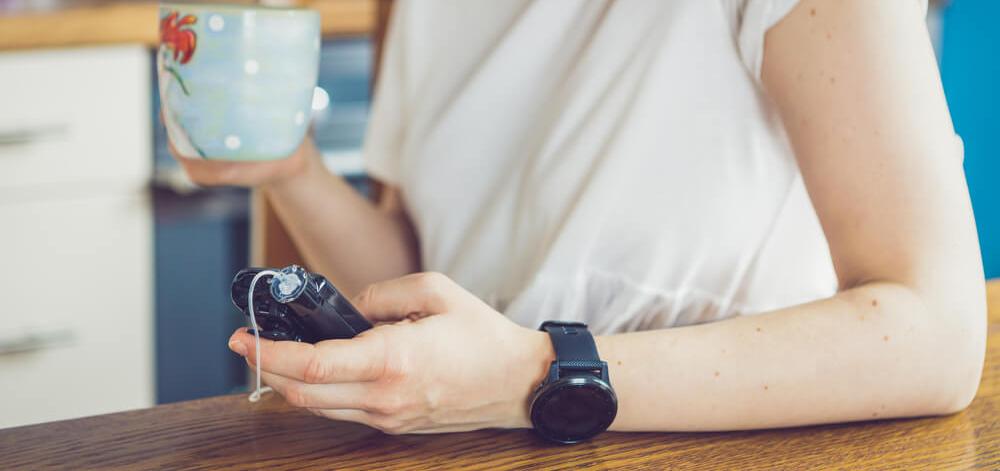Basics of Insulin for Type 1 Diabetes
Managing type 1 diabetes means using insulin therapy to keep blood sugar levels in a healthy range. Since people with type 1 diabetes don't make their own insulin, they need to take it as a medication.
Types of Insulin
There are a few different types of insulin:
-
Mealtime (bolus) insulins: These work quickly and include regular, rapid-acting, and ultra-rapid insulins. They’re taken as an injection before meals or used in insulin pumps.
-
Basal insulins: These last longer and include intermediate-acting, long-acting, and ultra-long-acting insulins. They're usually injected once or twice a day to keep blood sugar steady between meals and at night.
-
Pre-mixed insulins: These combine two types of insulin in one shot: one that works quickly to cover meals, and one that lasts longer to keep blood sugar steady. These are often taken twice a day, before breakfast and dinner.
Conventional vs. Intensive Insulin Therapy
The best insulin regimen depends on your unique needs and lifestyle. Your doctor can recommend the type of therapy that best suits you.
Conventional Insulin Therapy
What it is: Conventional insulin therapy involves injecting insulin twice daily, usually before breakfast and dinner. It typically uses pre-mixed short- and intermediate- or long-acting insulin.
What to know: Meals and activity are planned around the insulin, requiring consistent food intake and extra snacks during exercise to maintain blood sugar balance.
Who it’s for: This method suits people with regular routines who are able to maintain fixed meal and injection times. It tends to be more affordable than intensive insulin therapy, but less effective for people with type 1 diabetes.
Intensive Insulin Therapy
What it is: Intensive insulin therapy allows flexible, real-time adjustment of insulin based on blood sugar levels, food intake, and physical activity. It requires regular blood sugar monitoring and either multiple daily injections or an insulin pump:
- Injections: Basal (long-acting) insulin is usually injected once or twice daily to meet basic needs, while bolus (short-acting) insulin is taken before meals to manage carbohydrate intake.
- Pump: Insulin pump users receive only short-acting insulin, delivered continuously in small doses.
What to know: This approach can be more effective for achieving glycemic goals. And it offers more lifestyle flexibility — no need for fixed mealtimes or consistent carb intake. Insulin doses are adjusted based on your current needs, activity level, and time of day.
Who it’s for: This method is for people who want or need more flexibility. It’s especially helpful for children and teens, since their insulin needs can change often due to growth and hormone changes.
Using intensive insulin therapy is helpful because it closely mimics natural insulin release and can adjust the dose as needed. This method helps manage blood sugar levels well and still allows kids to live active, flexible lives.
Getting Started with Insulin Therapy
There are a few things you should know how to do before you begin:
Time Your Insulin Right
Rapid-acting insulin should be given 10 to 15 minutes before a meal, so it works with your food. Basal insulin works best when taken at the same time each day.
Store Insulin Properly
Storing insulin the right way helps it work properly. Don’t let insulin get too hot, freeze, or sit in direct sunlight.
Unopened insulin should be kept in the fridge (36 to 46 degrees F). Once opened, most insulin vials or pens can be kept at room temperature (below 86 degrees F) for up to 28 days. Check the package insert for specific instructions.
Prevent Skin Issues
Sometimes the skin where you inject insulin can get red, swollen, or itchy. This can happen if you use the same spot too often or if your skin is sensitive. To help prevent this, it's important to switch or rotate to a different spot each time, and use the right injection technique.
If you use an insulin pump, it’s important to prevent infection, damage to the skin, scarring below the skin, and fat buildup from excessive use of one area (called lipohypertrophy). Check your site regularly for irritation, redness, or swelling. Changing the spot where you place the pump helps prevent potential skin problems.
If you have a skin problem that doesn’t go away, talk to your doctor or healthcare provider.
Watch for Pattern Changes
Whether your insulin is delivered by injection or pump therapy, it’s always a priority to avoid low blood sugar, also called hypoglycemia. Low blood sugar (below 70 mg/dL) can happen if you take too much insulin, skip meals, or are more active than usual. It can cause symptoms like shaking, sweating, and feeling dizzy or confused.
When adjusting insulin doses, it’s important to look at your daily or weekly blood sugar patterns and trends, whether you’re doing fingerstick checks or continuous glucose monitoring.
Understanding these patterns can help you spot problems early and make the right changes to stay healthy.
Want to Read More?
Access all of Dario Connect’s content, community, and experts for free!
Already a member? Login
Want to Read More?
Access all of Dario Connect’s content, community, and experts for free!
sign UP For FreeAlready a member? Login


